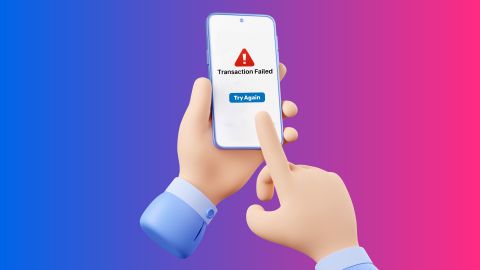Explore the electric grid’s definition, types, components, and how it works. Gain insights into the importance of grids and their role in modern energy systems.
Introduction to electric grid
-
An electric grid is a complex network that delivers electricity from producers to consumers. It comprises power generation facilities, transmission lines, substations, and distribution systems.
The electric grid is a complex network that connects power plants to homes, ensuring a steady flow of electricity for our daily needs. While this system keeps the lights on, paying your electricity bill should be just as seamless. With Bajaj Finserv’s BBPS platform, Bajaj Pay, you can handle your electricity bills quickly and effortlessly, staying connected without a hitch.
The grid ensures that electricity is available on demand, connecting various energy sources like fossil fuels, renewables, and nuclear power to homes and businesses. It operates by transmitting high-voltage electricity over long distances and stepping down the voltage for safe use. The reliability and efficiency of the electric grid are crucial for modern society, enabling economic growth and supporting daily activities.
Know about what is electric grid
An electric grid is an interconnected network that delivers electricity from producers to consumers. It comprises power generation facilities, transmission lines, substations, and distribution systems. The grid ensures reliable electricity supply, balancing demand and supply while integrating various energy sources, including renewables, for efficient energy management.Components of the Electric Grid
Power generation: Facilities that convert various energy sources into electricity, including coal, natural gas, nuclear, wind, and solar.
Transmission lines: High-voltage lines transport electricity over long distances to minimise energy loss.
Substations: Facilities that step down high voltage electricity to lower levels for consumer distribution.
Distribution networks: Systems that deliver electricity from substations to homes and businesses at safe voltage levels.
Control centres: Operations centres that monitor and manage the flow of electricity throughout the grid.How does the electric grid work
The electric grid generates electricity at power plants, transmitted through high-voltage lines to substations. At substations, transformers reduce the voltage for distribution. Electricity flows through distribution lines to individual consumers. Grid operators manage this process by balancing supply and demand in real time, ensuring reliability. They monitor electrical flow and can reroute power during outages or peak demand periods. This interconnected system allows for efficient energy use and supports various residential, commercial, and industrial applications.Types of electric grids
National grid: A large-scale network that connects multiple regional grids across a country.
Regional grid: Interconnections of transmission systems within a specific area allow localised power sharing.
Microgrid: A smaller network that can operate independently or in conjunction with the main grid, often utilising renewable energy sources.
Smart grid: An advanced grid incorporating digital technology for improved monitoring, control, and efficiency.Importance of electric grids in modern society
Electric grids are vital for maintaining the functionality of modern society. They provide reliable access to electricity for homes, businesses, healthcare facilities, and transportation systems. The grid supports economic activities by enabling industries to operate efficiently and facilitates technological advancements. Additionally, it plays a critical role in integrating renewable energy sources into the energy mix, promoting sustainability and reducing carbon emissions.Smart grids and future trends
Smart grids represent the future of electrical infrastructure, integrating digital technology to enhance efficiency and reliability. These grids utilise advanced metering systems, sensors, and communication networks to optimise energy distribution and consumption. Future trends include increased use of renewable energy sources, energy storage solutions, electric vehicle integration, and enhanced cybersecurity measures to protect against threats.Challenges in electric grid management
Aging infrastructure: Many grids need to be updated and require significant investment for upgrades.
Demand fluctuations: Managing varying electricity demand can strain resources during peak times.
Integration of renewables: Incorporating intermittent renewable energy sources poses challenges for grid stability.
Cybersecurity threats: Protecting the grid from cyberattacks is increasingly important as technology advances.Related technologies and innovations in electric grids
Energy storage systems: Technologies like batteries that store excess energy for later use.
Demand response programs: Initiatives encouraging consumers to adjust their usage during peak periods.
Distributed generation: Localized energy production methods such as solar panels that reduce reliance on centralised power plants.
Advanced metering infrastructure (AMI): Smart meters that provide real-time data on energy consumption for better management.Conclusion
Electric grids are essential for the functioning of modern society, providing reliable electricity to homes, businesses, and critical infrastructure. As we face growing energy demands and the need for sustainable solutions, the evolution of electric grids—particularly through the development of smart grids—will play a crucial role in integrating renewable energy sources and enhancing efficiency. However, challenges such as ageing infrastructure, demand fluctuations, and cybersecurity threats must be addressed to ensure the resilience and reliability of the grid. By embracing innovations and technologies, we can create a more robust electric grid that meets the needs of future generations while promoting sustainability and energy security.
-
Recharge and Pay Bills
Mobile Prepaid
Mobile Postpaid
Broadband Bill Payment
Electricity Bill Payment
Bajaj Finserv App for All Your Financial Needs and Goals
Trusted by 50 million+ customers in India, Bajaj Finserv App is a one-stop solution for all your financial needs and goals.
You can use the Bajaj Finserv App to:
You can use the Bajaj Finserv App to:
- Apply for loans online, such as Instant Personal Loan, Home Loan, Business Loan, Gold Loan, and more.
- Explore and apply for co-branded credit cards online.
- Invest in fixed deposits and mutual funds on the app.
- Choose from multiple insurance for your health, motor and even pocket insurance, from various insurance providers.
- Pay and manage your bills and recharges using the BBPS platform. Use Bajaj Pay and Bajaj Wallet for quick and simple money transfers and transactions.
- Apply for Insta EMI Card and get a pre-approved limit on the app. Explore over 1 million products on the app that can be purchased from a partner store on Easy EMIs.
- Shop from over 100+ brand partners that offer a diverse range of products and services.
- Use specialised tools like EMI calculators, SIP Calculators
- Check your credit score, download loan statements and even get quick customer support—all on the app.
Frequently asked questions
What is an electric grid?
An electric grid is an interconnected network that delivers electricity from power producers to consumers. It comprises power generation facilities, transmission lines, substations, and distribution systems that work together to ensure a reliable electricity supply.
How does the electric grid work?
The electric grid generates electricity at power plants, which is transmitted through high-voltage lines to substations. The voltage is reduced at substations for safe distribution to homes and businesses. Grid operators manage this flow to balance supply and demand.
What are the main components of the electric grid?
The main components include power generation (power plants), transmission lines (high-voltage power lines), substations (which step down voltage), and distribution networks that deliver electricity to end users.
What types of electric grids exist?
Electric grids can vary in size and complexity, including national, regional, micro, and smart grids. Each type serves different purposes and scales of electricity delivery.
Why is the electric grid important for society?
The electric grid is crucial for modern life as it provides reliable access to electricity for homes, businesses, and essential services. It supports economic activities and enables the integration of renewable energy sources, contributing to sustainability efforts.
Show More
Show Less




